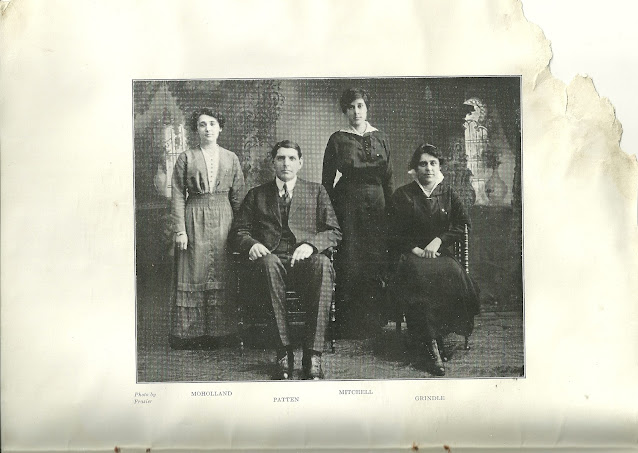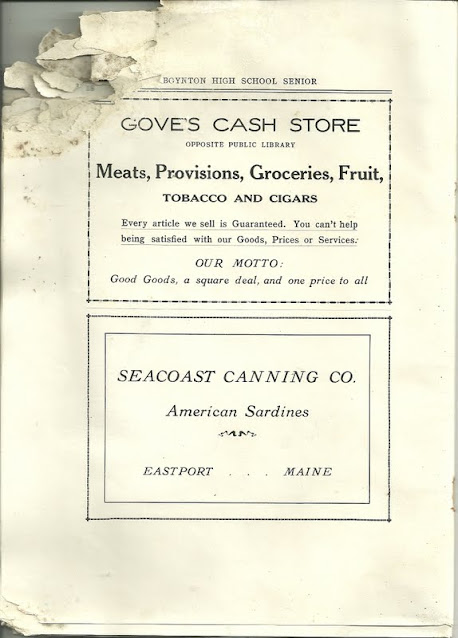Poem entitled "The Maiden of Quoddy, written by James De Mille (1833-1880), Maritime Canada author, poet and professor.
Found in the June 1930 issue of Canadian Geographical Journal, published by the Canadian Geographical Society at Montreal.
Hear Linnea Good's sublime rendition
The Maiden of Quoddy
By James De Mille
Sweet maiden of Passamaquoddy,
Shall we seek for communion of souls
Where the deep Mississippi meanders,
Or the distant Saskatchewan rolls?
Ah, no! in New Brunswick we'll find it -
A sweetly sequestered nook -
Where the swift gliding Skoodoowabskooksis
Unites with the Skoodoowabskook.
Meduxnakik's waters are bluer;
Nepisiguit's pools are more black;
More green is the bright Oromocto,
And browner the Peticodiac.
But colours more radiant, in Autumn,
I see when I'm casting my hook,
In the waves of the Skoodoowabskooksis,
Or perhaps in the Skoodoowabskook.
Let others sing loudly of Saco,
Of Passadumkeag or Miscouche,
Of Kennebeccasis or Quaco,
Of Miramichi or Buctouche;
Or boast of the Tobique or Mispec,
The Musquash or dark Memramcook;
There's none like the Skoodoowabskooksis
Excepting the Skoodoowabskook!
Think not, though the Ma-ga-gua-da-vic
Or Bocabec, pleases the eye;
Though Chi-put-nec-ti-cook is lovely,
That to either of these we will fly.
No! when in love's union we're plighted,
We'll build our log house by a brook
Which flows to the Skoodoowabskooksis,
Where it joins with the Skoodoowabskook.
Then never of Waweig or Chamcook
I'll think having you in my arms;
We'll reck not of Digdeguash beauties,
We'll care not for Popelogan's charms,
But as emblems of union forever
Upon two fair rivers we'll look;
While you'll be the Skoodoowabskooksis
I'll be the Skoodoowabskook.
From online research - corrections and/or additions requested:
James De Mille (changed from DeMill) was born 23 August 1833 in Saint John, New Brunswick, Canada, the son of Nathan S. and Elizabeth Tongue (Budd) DeMill. His paternal grandparents were John and Elizabeth (Smith) DeMill. John DeMill was a Loyalist from Connecticut who settled in New Brunswick, Canada. Elizabeth was also from a Connecticut Loyalist family.
James De Mille's maternal grandparents were Elisha and Mary Ann (Bonnell) Budd. Elisha Budd was a Loyalist from New York, who settled in Nova Scotia. His father, James Budd, also a Loyalist, from White Plains, New York, was killed at his own door in 1778 by a party of Whigs who called themselves "The Cow Boys". Mary Ann Bonnell's father Isaac was a Loyalist from New Jersey who settled in Digby, Nova Scotia.
James De Mille married Elizabeth Ann Pryor, daughter of Dr. John Pryor, first president of Acadia College.
By James De Mille
Sweet maiden of Passamaquoddy,
Shall we seek for communion of souls
Where the deep Mississippi meanders,
Or the distant Saskatchewan rolls?
Ah, no! in New Brunswick we'll find it -
A sweetly sequestered nook -
Where the swift gliding Skoodoowabskooksis
Unites with the Skoodoowabskook.
Meduxnakik's waters are bluer;
Nepisiguit's pools are more black;
More green is the bright Oromocto,
And browner the Peticodiac.
But colours more radiant, in Autumn,
I see when I'm casting my hook,
In the waves of the Skoodoowabskooksis,
Or perhaps in the Skoodoowabskook.
Let others sing loudly of Saco,
Of Passadumkeag or Miscouche,
Of Kennebeccasis or Quaco,
Of Miramichi or Buctouche;
Or boast of the Tobique or Mispec,
The Musquash or dark Memramcook;
There's none like the Skoodoowabskooksis
Excepting the Skoodoowabskook!
Think not, though the Ma-ga-gua-da-vic
Or Bocabec, pleases the eye;
Though Chi-put-nec-ti-cook is lovely,
That to either of these we will fly.
No! when in love's union we're plighted,
We'll build our log house by a brook
Which flows to the Skoodoowabskooksis,
Where it joins with the Skoodoowabskook.
Then never of Waweig or Chamcook
I'll think having you in my arms;
We'll reck not of Digdeguash beauties,
We'll care not for Popelogan's charms,
But as emblems of union forever
Upon two fair rivers we'll look;
While you'll be the Skoodoowabskooksis
I'll be the Skoodoowabskook.
From online research - corrections and/or additions requested:
James De Mille (changed from DeMill) was born 23 August 1833 in Saint John, New Brunswick, Canada, the son of Nathan S. and Elizabeth Tongue (Budd) DeMill. His paternal grandparents were John and Elizabeth (Smith) DeMill. John DeMill was a Loyalist from Connecticut who settled in New Brunswick, Canada. Elizabeth was also from a Connecticut Loyalist family.
James De Mille's maternal grandparents were Elisha and Mary Ann (Bonnell) Budd. Elisha Budd was a Loyalist from New York, who settled in Nova Scotia. His father, James Budd, also a Loyalist, from White Plains, New York, was killed at his own door in 1778 by a party of Whigs who called themselves "The Cow Boys". Mary Ann Bonnell's father Isaac was a Loyalist from New Jersey who settled in Digby, Nova Scotia.
James De Mille married Elizabeth Ann Pryor, daughter of Dr. John Pryor, first president of Acadia College.























































